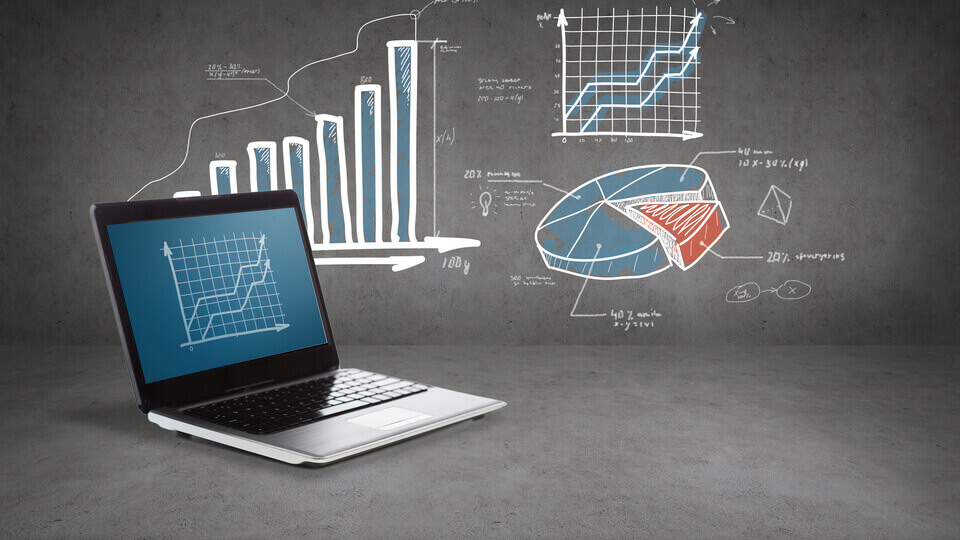Descriptive data analysis is a method for studying types of research that requires selecting an entire study population, or a study sample that represents the majority of the community.
The aim is to describe the nature of the phenomenon, and many scientific research tools are used to collect information from the subjects.
Such as (questionnaires), interviews, tests, and note cards. Of course, there are different classifications for each type of the aforementioned research tools, and the researcher must find what suits the research.
what is descriptive data analysis?
Descriptive analytics is divided into many branches, namely:
1- Content analysis approach: Media platforms in that period were among the important means used by specialists to identify the characteristics, traditions, and customs that represent a group or people.
And written texts or speeches delivered by leaders are considered an expression of that, and the content analysis approach ( content) in revealing the mysteries of these texts.
Interpreting their components, and coming up with clues that help in understanding trends. The content analysis approach is one of the most prominent classifications of the descriptive survey approach.
2- Job Analysis Approach: It is an approach that has an administrative dimension, and is related to determining the nature of the jobs included in commercial establishments.
And the duties that workers and employees must perform, and the ingredients that must be available in those who occupy these jobs;
Whether academic qualifications, experiences or skills, that curriculum includes the method of preparing for personal interviews with employees and the method of selecting the most appropriate.
3- Approach to studying public opinion trends: The procedural definition of public opinion is represented in the attitudes, ideas, and beliefs of a large group regarding a specific topic.
This type is a kind of descriptive data analysis in quantitative research, which is used to identify responsible parties for opinions on many economic, political, and social issues, and this helps in developing plans in their various classifications, and in making decisions in general.
4- School survey methodology: It is among the types of descriptive data analysis in research example
that is concerned with addressing the problems associated with the educational system in schools, and deals with teaching methods, the relationship between students with each other.
As well as the relationship between them and teachers, and studying the goals and plans set by those responsible for education in the light of the requirements that differs from one community to another.
5- The social survey method: It is one of the most famous classifications of descriptive data analysis. It provides a huge amount of information and data and is used extensively in educational and social research.
In order to identify the characteristics or characteristics of a large group, and this is used in a specific period of time and a specific place, the goal may be to count the numbers of the population, births, educated people, deaths, or address a societal problem.
how do I conduct a descriptive data analysis?
There are some steps that the researcher follows when conducting descriptive analytics research:
1- Determining the problem under study: The beginning of the procedures or steps of the descriptive analytics approach is to identify the research problem, and in this, it must be a realistic problem, visible to all.
2- Formulation of research questions: In this, the researcher formulates interrogative questions that express what he sees as solutions to the research problem, and this may be in the form of one or more questions.
And the researcher’s reference is the implementation of reason, event, and guesswork, or what is available from preliminary information, and of course, this is related to the objectives of the research. This is one of the most important steps in applying the descriptive survey method.
3- Establishing limits for research: these limits are represented in objective limits, spatial limits, and temporal limits, and the research does not necessarily include all of these limits.
In this, we find that the objective limits are binding for researchers in the various types of research. As for the spatial and temporal limits; They are optional depending on the need and the nature of the scientific research.
4- Choosing the research community: The researcher should choose the research community, which is the people who have the characteristics, traits, and trends that he wants to collect information about, among the basic steps of descriptive analytics.
5- Collecting information: This is done through available references and sources, as well as from the research community (subjects), and by using scientific research tools.
6- Writing the theoretical framework: it consists of explanations provided by the researcher; To answer the research questions, which are classified into sections, and chapters.
And topics are arranged in terms of ideas, with the possibility of the researcher using previous studies that talked about the subject of the research, and the researcher should review the results in a brief form.
7- Developing the results and recommendations of the research: The last step of the descriptive data analysis in quantitative research
is to extract the results from the research, after which the recommendations that the researcher sees as ideal solutions to the research problem can be developed.
What is the purpose of descriptive data analysis in research?
The descriptive data analysis research has a set of goals and objectives, which can be summarized in the following points:
- Collecting accurate, real, and detailed information about a phenomenon that actually exists in a particular society.
- Identifying existing problems or clarifying some phenomena.
- Comparing and evaluating some phenomena.
- Determining what individuals do in a problem and benefiting from their opinions and experiences, in envisioning future plans and making appropriate decisions in problems of a similar nature.
- Finding the relationship between the different phenomena.
Based on the foregoing, the aim of organizing and classifying information is to help the researcher reach conclusions and generalizations that help us develop the reality we are studying.
Descriptive data analysis does not aim at analysis as much as it aims at describing phenomena or describing reality as it is, in order to reach conclusions that contribute to understanding.
And developing this reality and finding a cure for its diseases and problems. As Many of those interested in research methods believe that descriptive analytics is based on five foundations:
- The possibility of using the various tools used to obtain data (such as interviews, observations, research forms, and analysis of documents and recordings).
- Given that descriptive studies aim to describe and identify the characteristics of the phenomena that are dispersed, there must be a difference in the level of depth of these studies.
- The sense that some of them are satisfied with just describing the phenomenon in question in quantity and quality without studying the reasons that led to what actually happened (such as abused childhood).
- Abstraction must be fabricated during descriptive research so that the characteristics or features of the phenomenon in question can be distinguished.
Especially in the field of social sciences characterized by extreme overlap and complexity, such as the study of the phenomenon of divorce and others.
- Generalization was also a basic requirement for descriptive studies so that judgments could be drawn from it that certify the various constituent categories of the phenomenon under study.
It was necessary to classify the things, facts, beings, or phenomena under study on the basis of a distinctive criterion because that is the only way to draw conclusions. Then work on generalizing it.
what are descriptive data analysis techniques?
The researcher relies on a set of excavations to conduct descriptive data analysis in quantitative research, which are:
1- questionnaire tool: this is the most popular tool that is used in the descriptive approach. It is a set of questions formulated by the researcher, with the aim of obtaining information and data related to the research phenomenon.
And there are many types of questionnaires according to the method of answering them, as there is a specific questionnaire that restricts the respondent to the way of answering.
And there is also an unspecified type of questionnaire that does not restrict the respondent\’s answer, in this, The type leaves the respondent free to include his opinion with all credibility.
2- The observation tool: is one of the good methods in the method through which the researcher investigates and monitors the phenomenon that he is researching, then he records what he noticed in relation to the phenomenon, and formulates and describes it clearly and accurately.
This tool depends on the experience and skill of the researcher in its ability to identify behaviors related to the phenomenon during Observation.
3- Interview tool: This tool includes many types, including an individual interview or a group interview. This tool is basically based on a dialogue that takes place between the researcher and the respondent about the phenomenon to be studied.
and through it, the researcher obtains the information that he can benefit from in the study, and it can be used by describing the emotions and physical expressions of the respondent.
Why is descriptive analysis important?
The descriptive data analysis in research example helps in making comparisons between the nature of the phenomenon in more than one place. For example, in the case of studying the problem of divorce, the phenomenon can be compared to more than one country.
The descriptive data analysis contributes to making the right decisions related to the study by providing clarifications and explanations for it.
Through descriptive analytics, opinions, and experiences can be formulated to develop future plans and perceptions to confront some dangerous phenomena.
What are the benefits of the descriptive data analysis method?
The most important features of descriptive analytics are:
1- The descriptive approach enjoys realism: One of the most important features of the descriptive data analysis is that it describes the phenomenon on the ground, That is, without the need for laboratories, closed rooms, or inaccurate research conditions, which may be required or deduced by other methods of research,
Therefore, it is considered suitable for researching many general phenomena and social, educational, and natural problems.
There are also types of descriptive data analysis that can be relied upon on its description and the results of its study of scientific and physical phenomena.
2 – Obtaining the most important information that is difficult to obtain from other research methods:
As one of the most important features of descriptive analytics is its suitability for obtaining some information that is difficult to obtain from other means
Research and quantitative measurement, such as statistical or numerical means, where the researcher can obtain a distinctive description of the phenomenon.
3- The descriptive method approach is close to the phenomena and the respondents: The descriptive data analysis in research example is based on the idea of real interaction between the researcher and the various phenomena.
As Information is collected by conducting interviews of different types and conditions, between the researcher and the respondent.
And then to collect important information through questions or questionnaires, as well as when collecting information on various phenomena.
Whether it is a natural or social phenomenon, the researcher researches the natural conditions of the phenomenon.
This gives the opportunity to participate and the live interaction between the researcher, the respondents, and the phenomena, which is a wonderful feature of descriptive data analysis.
4- The descriptive approach includes many fine details: One of the most important things that distinguish descriptive data analysis in quantitative research from other approaches is its way of listing the smallest details of the phenomenon, where the researcher must mention all.
That goes on in the scientific research arena of details and observations, such as mentioning the time with extreme accuracy and mentioning temperatures.
And the place in detail and all the vocabulary, the condition of the research or the phenomenon, and everything that can be subject to observation, the researcher mentions.
He carried out the descriptive approach, and this is considered one of the most important features that make it a permanent approach in scientific research.
5- The use of the descriptive method helps to make real comparisons between different phenomena:
Where it is possible, through the use of the descriptive method, that the researcher makes real and useful comparisons between phenomena and problems
through which the researcher can obtain real and useful results in scientific research, therefore, it is considered the preferred method for exploring facts, especially human, social, and natural facts.
This is certainly one of the most important advantages of using the descriptive method in scientific research.
6- The descriptive method does not interfere with the researcher much:
One of the clear advantages of descriptive data analysis is the lack of intervention by the scientific researcher while doing it.
Where the working conditions of research and study remain completely far from the intervention and control of the scientific researcher, and the primary function of the researcher remains.
Science is the description, observation, recording, and making of some simple observations. Hence came one of the most important features of the descriptive approach.
7- The descriptive method helps to record comments and make decisions: Finally, one of the most important features of descriptive analytics is to provide assistance to researchers in collecting opinions and comments.
And include all future plans, experiences, and perceptions, and then help in making the necessary and important decisions.
related question
how to use data analysis in descriptive statistics?
The experts did not specify a specific methodology to be used in the research, but rather it depends on the nature of the research itself. There is some research that requires the descriptive approach.
To identify the research problem, such as research and studies related to social phenomena such as divorce or early marriage.
There are others that require an empirical approach. For its positive results, especially research that requires scientific experiments that fall under the category of trial and error, such as chemistry or physics research.
There are those who require the inductive method; To predict what a particular phenomenon will happen in the future.
And it is possible that the phenomenon obliges the student or researcher to use one or more approaches; To reach the amount of data and information required to interpret it.
What are the 4 types of descriptive statistics?
There is more than one type of descriptive data analysis in research example, the most important of which are the following:
1- Analytical descriptive approach
The analytical descriptive approach is the first type of descriptive approach, and this type is specifically used to find out all the information about phenomena that are related to scientific research.
2- Correlative descriptive approach
If you want to study the relationships between all variables and each other.
3- The developmental descriptive approach
developmental descriptive approach is the third type of descriptive approach.
And through this approach you can learn a lot about the types of problems or phenomena, as well as through it you can learn about the characteristics of the phenomena.
4-Survey studies: through survey studies, you can learn about many phenomena, and it is considered one of the types of descriptive methods.
And careful observation of members of the study community in a specific environment is used to carry out the steps of this type of method.
In conclusion,
descriptive data analysis is an important step in collecting data in various fields, as it is done through steps and purifications followed by researchers during data collection.
Share via:


